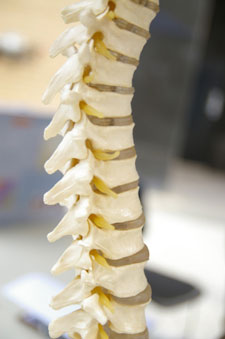What is Osteoporosis?
Bone is composed of water, collagen fibres, minerals including calcium, and salts. If bone resorption exceeds bone formation, for whatever reason, then the bone is going to be less dense and more fragile than it would be otherwise. Osteoporosis is a common progressive condition where the bone mass and density are reduced, coupled with demineralisation and a loss of bone matrix results in bones that are far more brittle fragile. Osteoporosis can be classified in to two categories. The primary form includes post-menopausal, senile, or idiopathic osteoporosis; and the secondary form is when the osteoporosis is a direct result of an existing medical condition, for example Cushing’s syndrome or hyperparathyroidism. In the 2014 – 2015 National health survey, 3.5% of Australian adults had been medically diagnosed with some degree of osteoporosis, affecting women more than men. Risk factors of developing osteoporosis include decrease estrogen levels, reduced thyroid function, hereditary factors, sedentary lifestyles, the use of some medications such as glucocorticoids, excessive caffeine or tobacco use, and nutritional deficiencies in calcium, vitamin C, and vitamin D.
Osteoporosis in the spine can cause vertebral fractures which can lead to a decrease in height and kyphosis (increased curvature of the thoracic spine and cervical spine). This can impair mobility and respiratory function. Osteoporosis is also thought to be associated with an estimated 1.5 million fractures annually in the United States. The healing process of fractured osteoporotic bone is often far slower than denser bones. The condition primarily affects the spine and hip bones.

What are the treatment options?
Diagnosis includes a bone density test and x-rays to monitor changes in the bone structure. Back pain is the most common symptom of osteoporosis, as nerves in the spinal column are under more pressure with the altered curvature of the spine. Medical interventions and treatments of osteoporosis include dietary supplementation of calcium, vitamin D, and vitamin K; hormone replacement therapy to correct any imbalances, medications to inhibit the bone resorption process, increasing weight bearing exercises, and various lifestyle changes.
Can Nubax Trio help with Osteoporosis?
Mild to moderate osteoporosis may benefit from spinal traction especially for the lumbar vertebrae to aid in the prevention of kyphosis development. With the Nubax Trio, this traction can be achieved in the comfort of your own home in three easy steps daily. Nubax Trio may also aid healing and remineralisation of bone by increasing circulation and allowing better nutrient delivery in the spine.
Coupled with correcting the cause of the condition, the Nubax Trio may offer much needed pain relief without the use of heavy medications. Nubax Trio may not be suitable for use in severe cases of osteoporosis, a qualified health professional will be able to assess individual cases and determine the suitability of using back traction as an option.



